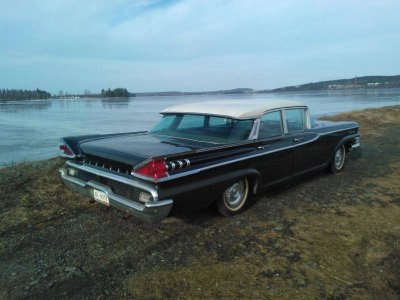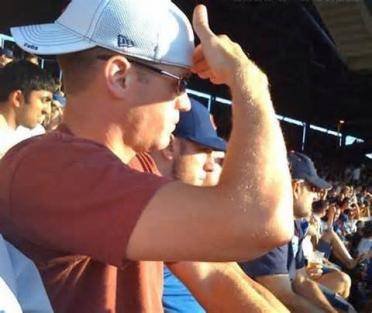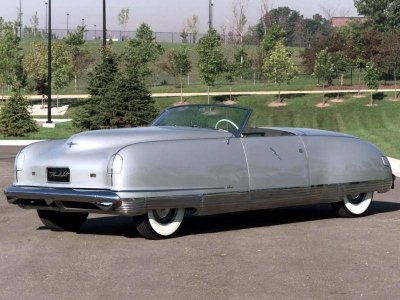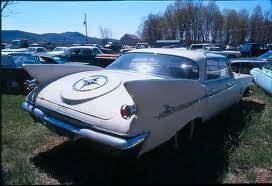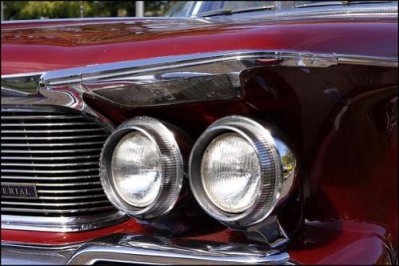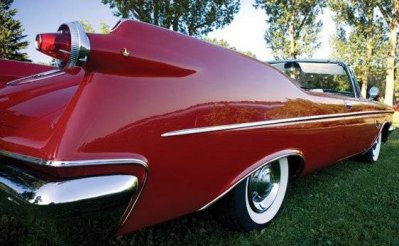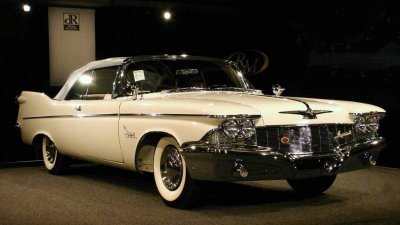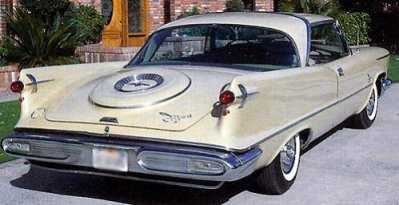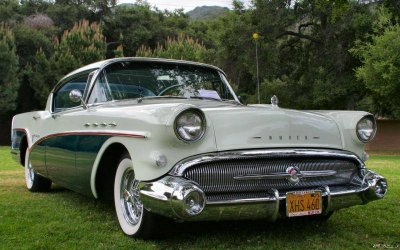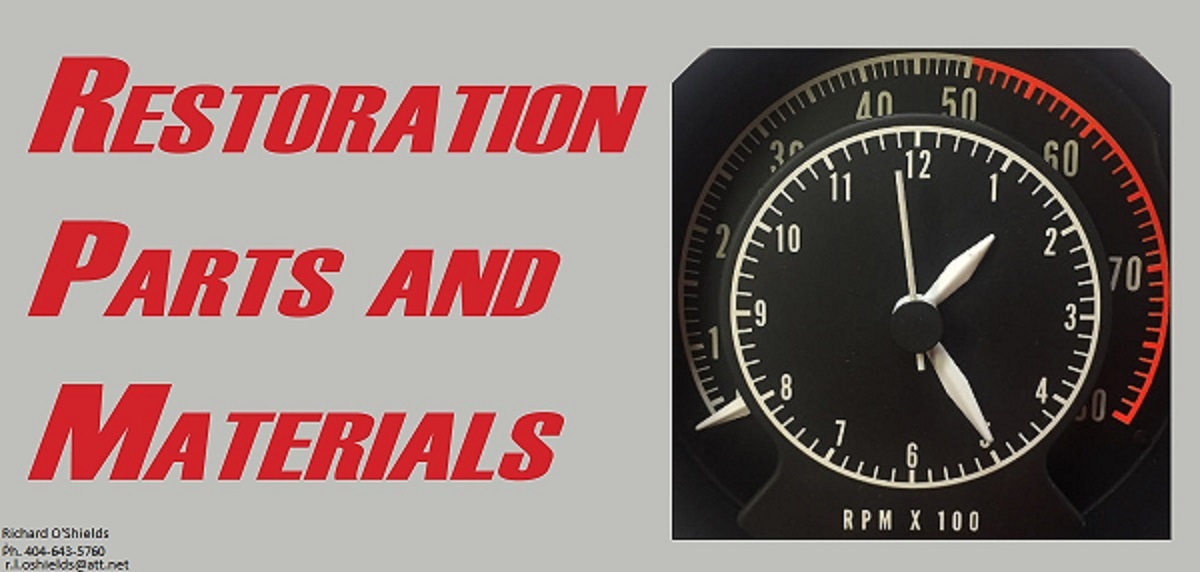You are using an out of date browser. It may not display this or other websites correctly.
You should upgrade or use an alternative browser.
You should upgrade or use an alternative browser.
Saw the ad. Thought of Gary.
- Thread starter commando1
- Start date
300rag
It's Not Going to Shift Itself
bluefury361
Old Man with a Hat
How useful is that extended portion of the roof on the black car? Is that to aid aerodynamics also?
Those extended roof lines, also popular in the GM lines in the late 50's, early 60's provided excellent head room for rear seat passengers as well as eliminating the glass house solar effect.
If you have ever ridden in the back of a "bubble top" GM car on a sunny day you would appreciate both.
70NPORT
Old Man with a Hat
seriously.Those extended roof lines, also popular in the GM lines in the late 50's, early 60's provided excellent head room for rear seat passengers as well as eliminating the glass house solar effect.
If you have ever ridden in the back of a "bubble top" GM car on a sunny day you would appreciate both.
Wildaugust
Senior Member
They could have made the rear edge basically flush with the glass, I suppose. The roof would still have had to extend almost as far anyway. On that Mercury, the glass wraps around to form the part of the c-pillars that would be metal on cars built a few years later. I remember seeing Buicks, Chevrolets and Oldsmobiles with similar roof designs. Then of course there were the Mercurys with the "Breezeway" rear windows in the early sixties. The roof on them had to extend outward to keep the rain out when the rear window was open.How useful is that extended portion of the roof on the black car? Is that to aid aerodynamics also?
Don't get me wrong. I don't hate any of these cars enough to not want one. I would happily take any of the cars mentioned/pictured so far. While some styles were extravagant, it was certainly an interesting era in automotive design.
cm23uoc
Old Man with a Hat
- Joined
- Feb 13, 2011
- Messages
- 8,368
- Reaction score
- 3,448
Cantilever Roof to the extreme in a Citroen Ami 6. The French were always inventive in putting as much passenger room and four doors on the smallest scales. Apart from Coupes that deserved their names the vast majority was 4door sedans. This car was no.1 or 2 in French registrations in the early 60s AFAIK.
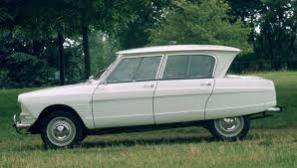


On that Mercury, the glass wraps around to form the part of the c-pillars that would be metal on cars built a few years later. I remember seeing Buicks, Chevrolets and Oldsmobiles with similar roof designs.
Now when you mention Oldsmobiles, I suddenly remembered the first time I drove an American car. It was a 59 or 60 Olds and I was just on the test run. I was amazed how easy it was to reverse the car, you could see things almost as well as when driving forward.
The similar top design did the trick...
Wildaugust
Senior Member
That car has no personality IMO. Bland, jelly bean styling like many cars today. They imitate each other with small variations. It is harder to design today then in the past before the whole OPEC thing.
I agree that cars today are pretty generic looking. The only places that the designers can play with style are the shape of the grilles, headlights and tail lights. Other than that, the bodies of cars from all manufacturers appear virtually identical, except for the position of a line or two.
It actually amazes me that we ever got the retro look Challengers and Mustangs. Aerodynamics prevents the designers from doing much in the way of retro looking cars. How far could they have gone with these, for example?

How "retro" did they really want to go?
IMO, they did a pretty good job considering.
Wildaugust
Senior Member
I actually liked those roof designs on the fullsize GMs. IIRC, only the 4-door hardtops got that roofline.Now when you mention Oldsmobiles, I suddenly remembered the first time I drove an American car. It was a 59 or 60 Olds and I was just on the test run. I was amazed how easy it was to reverse the car, you could see things almost as well as when driving forward.
The similar top design did the trick...
70bigblockdodge
Old Man with a Hat
If I had a bump on my a$$ like those BMW's or that Lincoln that Gary posted I would go strait to the doctor.
If I had ones like the 50s cars I would show everybody.
If I had ones like the 50s cars I would show everybody.
70NPORT
Old Man with a Hat
lolseriously.
The horizontal stabilizer prevents back seat passengers changing into red necks...
70NPORT
Old Man with a Hat
70NPORT
Old Man with a Hat
It is not until 64' when logic begins to mount a return for the Imperials........a modest attempt but attempt nonetheless...... 63' vs 64'.


70NPORT
Old Man with a Hat
1965 for the New Yorker.................65' vs 64'


70NPORT
Old Man with a Hat
1969. The watershed year.....




70NPORT
Old Man with a Hat
Uncle Sam jumps into the scene big time in 74' and tries to FUBAR everything with mandates for this and that and it shows in the designs...

70NPORT
Old Man with a Hat
It is not until the 90's (IMO) that logic once again attempts a comeback......."cab forward cars"...




70NPORT
Old Man with a Hat
Do they not bear resemblance to this? Shocking.

Similar threads
- Replies
- 7
- Views
- 873
- Replies
- 1
- Views
- 728
- Replies
- 2
- Views
- 610

